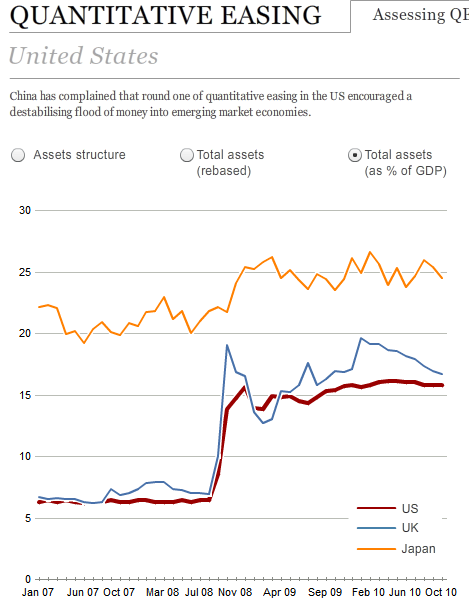
The first overwater bungalows were constructed on the French Polynesian island of Ra’iātea in 1967 by three American hotel owners, Jay Carlisle, Donald McCallum and Hugh Kelley. A cottage is defined in English law as a small residential property that doesn’t have land. In Scotland, the equivalent term is a croft, and in Welsh, it’s bwthyn.
You’ll even be able to drop some cottage and bungalow facts on them. Part of the reason why there’s not much variation is that the definition of cottage is so broad. After all, it’s quite difficult to say one cottage is a certain style while another one is different if your only real decider is that it’s small.
Another major difference is that villas promote a sense of community since they are generally constructed within a gated community. On the other hand, a bungalow also may or may not have amenities. But villas are usually packed with modern private amenities like a swimming pool, gym, walk-in closets, innovative kitchens, and much more. Bungalow homes are usually located in areas surrounded by natural beauty. If you are looking for a life in nature, it is important to choose a quiet location. Bungalows near the sea, in forested areas, or on the foothills allow for a tranquil lifestyle.
The Definition of a Cottage
A raised bungalow typically has a foyer at ground level that is halfway between the first floor and the basement. Thus, it further has the advantage of creating a foyer with a very high ceiling without the expense of raising the roof or creating a skylight. Because the basement is not that deep, and the ground must slope downwards away from the building, the slope of the driveway is quite shallow. This avoids the disadvantage of steep driveways found in most other basement garages. Bungalows without basements can still be raised, but the advantages of raising the bungalow are much less. The first two bungalows in England were built in Westgate-on-Sea in 1869 or 1870.
Even so, it’s common for the terms cottage and bungalow to be used interchangeably. A ranch bungalow is a bungalow organized so that bedrooms are on one side and “public” areas (kitchen, living/dining/family rooms) are on the other side. If there is an attached garage, the garage is on the public side of the building so that a direct entrance is possible, when this is allowed by legislation. On narrower lots, public areas are at the front of the building and such an organization is typically not called a “ranch bungalow”.
So, when it comes to cottage vs. bungalow, what’s the difference? The biggest difference of a cottage vs. bungalow is that the latter is always a single-storey. Cottages, on the other hand, are 2-storey and have other architectural features that define them as a clear category of building. A large fraction of the older residential buildings in Milwaukee, Wisconsin, are bungalows in a similar Arts and Crafts style to those of Chicago,[24] but usually with the gable perpendicular to the street. Also, many Milwaukee bungalows have white stucco on the lower portion of the exterior. First- and second-generation Jewish-American families were especially likely to rent such houses.

While houses can have more complex plans and more rooms, bungalows usually have a simpler and more spacious interior arrangement. A raised bungalow is one in which the basement is partially above ground. The benefit is that more light can enter the basement with above ground windows in the basement.
Michigan bungalow
For bungalow houses in Turkey, it is important not to overlook the safety factor. Since Turkish bungalow houses are usually located in quiet and isolated areas, it is important to learn about security measures. Checking if there is a gated community or security system in place will make you and your family feel safe and secure.

A bungalow is well suited to persons with impaired mobility, such as the elderly or those in wheelchairs. There are no such restrictions when it comes to bungalows, as they are generally constructed on a piece of land that you own. This customisability allows you to extend or completely change the structure of your property, which is not the case with villas. difference between bungalow and villa Buying a bungalow is a beautiful way to experience a peaceful life surrounded by nature. However, deciding by considering the factors mentioned above will help you choose the most suitable Turkish bungalow houses for you. So, next time you’re out travelling around the UK, make sure you correct anyone who uses the term cottage (or bungalow) incorrectly!
First Time Home Buyers
In the UK, the term cottage is often used as a romantic descriptor of a small, rural property that looks fairly quaint. Cottages can trace their origin back to the medieval period, when they were homes for cotters. A cotter was a semi-independent peasant who lived on owned lands but had certain rights that put them above ‘regular’ peasants. By extension, a cottage can be detached, semi-detached, or a terrace.
15 Best Overwater Bungalows in the Caribbean in 2023 – The Planet D
15 Best Overwater Bungalows in the Caribbean in 2023.
Posted: Sat, 06 May 2023 07:00:00 GMT [source]
The old bungalow colonies continue to exist in the Catskills, and are occupied today chiefly by Hasidic Jews. Anyway, New Zealand cities are filled with bungalows and villas – and with “bungled villas” representing a mongrel mix of the two – yet despite their differences, which are vast, many folk fail to distinguish between the two. An apartment is a rented residential unit that is part of one or several buildings.
Village & Cottage
You’ve probably heard the term ‘holiday cottage’ in reference to second homes or short-term rentals. Also, because they have a second-storey, their footprint is significantly smaller than that of a bungalow. A cottage will usually have 2-3 bedrooms, although this can depend on when it was built. While we won’t see many cottages from the 11th century, it’s not uncommon to see buildings dating back to the 16th century or a bit before. The bungalow was first built in the UK in 1869, in a seaside town called Westgate-on-Sea, Kent. The name comes from India, meaning ‘a house built in the Bengali style’.
- On narrower lots, public areas are at the front of the building and such an organization is typically not called a “ranch bungalow”.
- But as a result they are often excessively dark inside, requiring artificial light even in daytime.
- This is related to their recent age, as thatching had fallen out of popularity as a roofing material by this point due to the cost-effectiveness of tiles.
- Bungalows near the sea, in forested areas, or on the foothills allow for a tranquil lifestyle.
In India, the term bungalow or villa refers to any single-family unit, as opposed to an apartment building, which is the norm for Indian middle-class city living. The normal custom for an Indian bungalow is one story,[11] but as time progressed many families built larger two-story houses to accommodate humans and pets. The area with bungalows built in 1920s–1930s in New Delhi is now known as Lutyens’ Bungalow Zone[12] and is an architectural heritage area. In Bandra, a suburb of India’s commercial capital Mumbai, numerous colonial-era bungalows exist; they are threatened by removal and replacement of ongoing development. The majority of Chicago bungalows were built between 1910 and 1940. They were typically constructed of brick (some including decorative accents), with one-and-a-half storys and a full basement.
Like many other local houses, Chicago bungalows are relatively narrow,[23] being an average of 20 feet (6.1 m) wide on a standard 24-foot (7.3 m) or 25-foot (7.6 m) wide city lot. Their veranda (porch) may either be open or partially enclosed (if enclosed, it may further be used to extend the interior rooms). Let’s start with the difference between villa and duplex apartments. These apartments have two-storeys, specially designed for single families, as they only have a single kitchen and dining area. Duplex apartments are typically built in apartment buildings, whereas villas are built on the ground level. Villa and bungalow are two examples of houses designed and positioned in different architectural styles.
- The correct term for this kind of property is a chalet bungalow.
- The most important thing to consider when buying a bungalow is accessibility.
- Anyway, New Zealand cities are filled with bungalows and villas – and with “bungled villas” representing a mongrel mix of the two – yet despite their differences, which are vast, many folk fail to distinguish between the two.
- The majority of Chicago bungalows were built between 1910 and 1940.
Also, comparing prices will help you make a choice that fits your budget. However, after the Enclosures Act (which was first introduced in 1604), the definition was legally changed. This is what the cotter would use to grow their food and rear their livestock. It was one of the key residential rights that separated them from peasants.
Will Green Housing be the Future of Real Estate in India?
Any prices or information on this site are subject to change without any notice. We always do our best to keep information and prices up-to-date, but we can’t guarantee the accuracy of prices or special offers. We are not responsible for the products sold or actions taken by our affiliate partners.
Therefore, a bungalow can be a cottage in that it’s small, similar to a lodge, but it must be a single-storey cottage. It’s not uncommon for a bungalow to have a second storey thanks to a loft conversion. However, to remain a bungalow, it must keep its sloping roof, which necessitates dormer windows. They had wanted to attract tourists to Ra’iātea, and to their hotel, but the island had no real beaches and so to overcome this handicap they decided to build hotel rooms directly on the water using large wooden poles.
There was a massive boom of bungalows in seaside towns in the inter-war period. If a cottage has a second storey that was built as part of the original construction, it’s just a cottage. The correct term for this kind of property is a chalet bungalow. A hut defined as a simple house or shelter is also called a shack or shanty. A bungalow symbolises a more traditional way of living, while a villa is catered towards modern homebuyers.
The building is marketed as a bungalow with loft because the main living areas of the house are on one floor. All the convenience of single-floor living still applies and the loft is not expected to be accessed on a daily basis. Real estate can be tricky sometimes if you’re not familiar with it. However, understanding basic real estate terminologies becomes the need of the hour, especially if you’re looking for luxury homes. Clearing up the jargon will not only help you choose the best kind of property but also allow you to plan your finances and home loan efficiently. The overwater bungalow is a form of, mainly high end, tourist accommodation inspired by the traditional stilt houses of South Asia and the Pacific.
